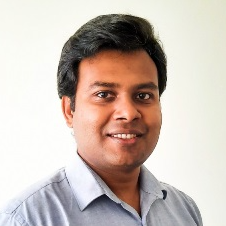Recent Advances in Remote Sensing of Soil Moisture
A special issue of Remote Sensing (ISSN 2072-4292). This special issue belongs to the section "Environmental Remote Sensing".
Deadline for manuscript submissions: closed (31 March 2024) | Viewed by 1768
Special Issue Editors
Interests: remote sensing; GIS; natural resource management; soil moisture
Interests: satellite gravimetry; remote sensing; data assimilation; land surface and hydrology modeling
Special Issues, Collections and Topics in MDPI journals
Special Issue Information
Dear Colleagues,
Soil moisture is a key variable in a number of environmental processes, at both regional and global scales, due to its contribution to water, carbon and energy cycles. Therefore, soil moisture information is important for a wide range of applications, including hydrology, climatology and agriculture. However, obtaining reliable soil moisture information at the required spatial/temporal resolution and along soil depth with a high accuracy level is still challenging, especially due to highly variable soil moisture behavior on its spatiotemporal domains and its complex relationships with forcing factors such as vegetation, soil texture, topography and meteorology.
Advancements in both active and passive remote sensing technologies, satellite remote sensing, drone technologies and data assimilation methods have been able to provide soil moisture estimations at different spatial scales from meters to tens of kilometers, as well as temporal resolutions from regional to global coverage. Data from passive microwave instruments, such as the multifrequency AMSR-E/2, FY-3 MWRI, L-band SMOS and SMAP, and active microwave instruments, including ASCAT/MetOp, ALOS-2, Sentinel-1 and the P-band GRACE, have in the last two decades been widely used for soil moisture applications at different spatial scales.
This Special Issue aims to encourage the submission of studies covering recent advances in remote sensing in soil moisture. We welcome high-quality studies covering a wide-range of topics, including novel soil moisture missions, datasets and resolution enhancement algorithms, including spatiotemporal fusion techniques of different datasets, validation methods and novel applications.
Topics may address, but are not limited to, the following:
- Retrieval algorithms;
- Calibration and validation methods;
- Data integration and assimilation methods;
- Downscaling methods;
- Data fusion methods to build time-dense datasets;
- Novel applications of remotely sensed soil moisture products.
Dr. Indishe Senanayake
Dr. Natthachet Tangdamrongsub
Dr. Bin Fang
Guest Editors
Manuscript Submission Information
Manuscripts should be submitted online at www.mdpi.com by registering and logging in to this website. Once you are registered, click here to go to the submission form. Manuscripts can be submitted until the deadline. All submissions that pass pre-check are peer-reviewed. Accepted papers will be published continuously in the journal (as soon as accepted) and will be listed together on the special issue website. Research articles, review articles as well as short communications are invited. For planned papers, a title and short abstract (about 100 words) can be sent to the Editorial Office for announcement on this website.
Submitted manuscripts should not have been published previously, nor be under consideration for publication elsewhere (except conference proceedings papers). All manuscripts are thoroughly refereed through a single-blind peer-review process. A guide for authors and other relevant information for submission of manuscripts is available on the Instructions for Authors page. Remote Sensing is an international peer-reviewed open access semimonthly journal published by MDPI.
Please visit the Instructions for Authors page before submitting a manuscript. The Article Processing Charge (APC) for publication in this open access journal is 2700 CHF (Swiss Francs). Submitted papers should be well formatted and use good English. Authors may use MDPI's English editing service prior to publication or during author revisions.
Keywords
- soil moisture
- remote sensing
- retrieval algorithms
- downscaling
- microwave remote sensing
- SMAP
- SMOS
- hydrology







